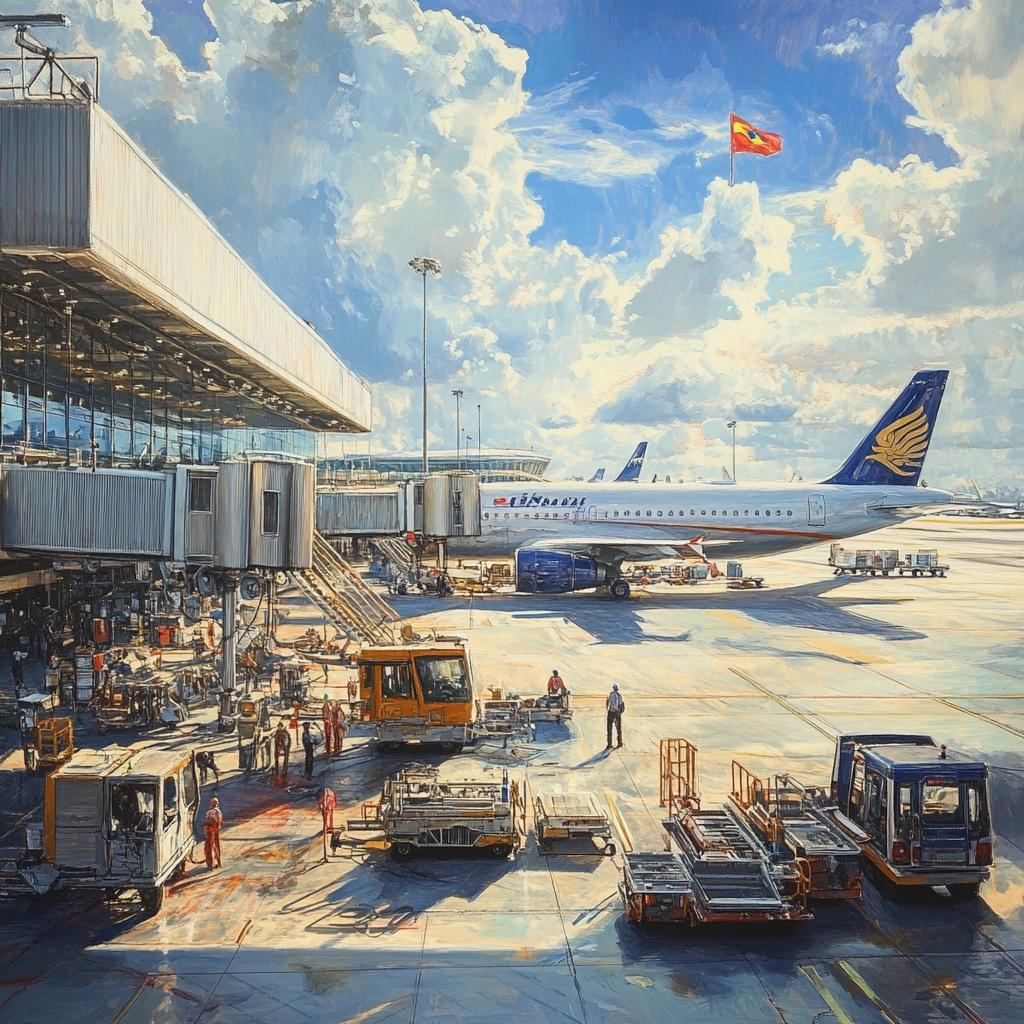Suvarnabhumi Airport, Thailand’s bustling aerial gateway to the world, has now been assigned a critical new role—transforming itself into a bustling hub for small-to-medium-scale aircraft maintenance. Meanwhile, nestled in Rayong, U-Tapao Airport stands on the brink of becoming the powerhouse of large-scale aircraft servicing. This exciting shift, orchestrated by the Civil Aviation Authority of Thailand (CAAT), is set to firmly anchor Thailand’s position as a premier aviation hub in the region, propelling the country to new heights in the world of aviation.
As the CAAT charges forward with its ambitious plans to foster aircraft maintenance, repair, and overhaul (MRO) centers, as well as spur the growth of the air cargo industry, the sky is truly the limit. At the helm of this exhilarating mission, CAAT Director, Air Chief Marshal Manat Chavanaprayoon, has embraced his role with full throttle enthusiasm. His MRO policy, a masterstroke in the making, aims to revolutionize the service capabilities of airlines both nestled in and winging their way toward the Kingdom of Thailand. Imagine landing in the Land of Smiles, only to have your aircraft receive top-notch inspection and maintenance right there on Thai soil—efficiency meets Thai hospitality!
Suvarnabhumi, the jewel in Thailand’s aviation crown, buzzes with an enviable frequency of flights but currently lacks the on-site maintenance prowess it so dearly needs. In a visionary leap, the CAAT is drafting a comprehensive master plan to weave the MRO policy into the fabric of Thailand’s aviation industry. This meticulous plan is set to reach its zenith within a year, poised to transform concepts into concrete action.
The first stride in this aviation odyssey involves rejuvenating a 700-rai plot just south of the Suvarnabhumi runway, repurposing it into vibrant facilities for small-and-medium-sized aircraft maintenance. Imagine a landscape dotted with aviation training hubs, where flight training simulators hum with life, and aspiring aviation engineers and technicians hone their skills to perfection. This metamorphosis promises to transform Suvarnabhumi into a magnet for airlines, offering a kaleidoscope of high-quality maintenance services emblazoned with the Thai seal of excellence.
While Suvarnabhumi prepares to spread its maintenance wings, U-Tapao is dancing to its own tune under the Eastern Economic Corridor (EEC) policy. Embracing a role as the epicenter for large aircraft maintenance, U-Tapao’s transformation is on the fast track, set to save airlines from the expense and hassle of overseas maintenance detours. This initiative promises to weave a rich tapestry of local and international investment, knitting together a future vibrant with promise and prosperity.
Yet, the CAAT’s vision doesn’t stop at maintenance. Thailand’s air cargo business, although flown by only a few Thai-registered airlines, is poised for a gusty tailwind. The current legal framework mandates that a whopping 51% of any air cargo company in the Kingdom has to belong to Thai nationals—a financial burden that’s heavier than an over-packed suitcase. But change is in the air! The CAAT plans to propel legislative reforms, lightening the ownership load to a more pocket-friendly 20%. And if the winds continue to blow favorably, in five years, this ceiling could be raised to 30%, opening the runway to potentially 100% Thai ownership in the not-so-distant future.
With each strategic maneuver, the CAAT script writes a new chapter in Thailand’s aviation saga. From maintenance marvels to cargo conquests, this tapestry of innovation, ambition, and strategic foresight paints a promising horizon. So, whether you’re traversing the skies above or observing the bustling runways flicker beneath, remember, Thailand is not just a dot on the aviation map; it’s a burgeoning star—a hub, a home, and a haven for the sky’s marvels.


















I’m thrilled to see Thailand stepping up as a major player in aviation maintenance. This could have a huge positive impact on the local economy.
Absolutely! More job opportunities in aviation and related sectors can only be a good thing.
Let’s not forget the potential risks, though—like market saturation and increased competition.
But what about the environmental impact of increased air traffic? Is that being considered?
I’m worried about the safety standards. Will these new hubs maintain the same level of safety and reliability?
The hospitality aspect is what excites me. Nothing like Thai hospitality being extended to aircraft maintenance!
Hospitality is nice, but not exactly what you expect when dealing with aircraft safety.
True, but good vibes can’t hurt!
The reduction in ownership percentages for air cargo companies seems like a double-edged sword to me. While it invites more foreign investment, it may reduce Thai control over such critical industries.
But isn’t inviting more investment crucial for modernization and efficiency?
It can be, but there’s also the risk of losing national identity in business.
U-Tapao’s transformation could make it a key player in global aviation maintenance. The logistics coordination could be a massive challenge, though.
Totally agree. Logistics is often the hidden giant in such massive undertakings.
Is Thailand really ready to be a leading aviation hub with these developments, or are they biting off more than they can chew?
I’m curious about the training facilities mentioned. This could provide a world-class opportunity for young engineers.
If the investment in training is as serious as they say, it could shape a new generation of aviation experts.
Does anyone know if there will be new airline partnerships involved in this expansion?
I assume many airlines will be interested if the maintenance quality is high enough.
All this excitement, but where is the discussion on sustainable practices in these new facilities? Can’t ignore the climate impacts!
Good point. Modernization must come with eco-friendly advancements too.
Thailand has so much potential. This could put them above other ASEAN countries in the aviation sector.
Less reliance on overseas services is definitely a win for cost reduction for airlines.
Can’t wait to see the aviation training hubs come to life. Could revolutionize pilot and crew education!
This could be a huge boon for aviation enthusiasts and future pilots like myself!
With global travel expanding post-pandemic, these MRO facilities could not have come at a better time.
But will air travel itself change? Are we future-proofing the wrong things?
CAAT’s efforts might be the push needed for other countries to step up their game in the aviation industry.
Anyone think Thai cuisine will make it into the catering services as a result of these updates?